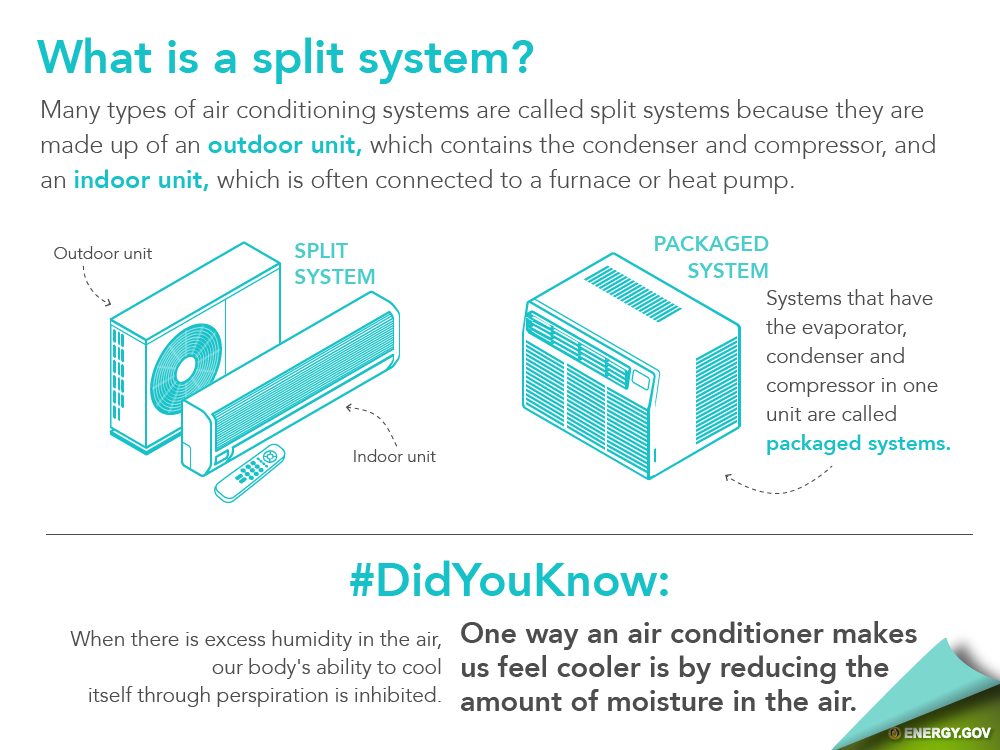The most effective heatpump can save you significant amounts of money on power bills. They can likewise help in reducing greenhouse gas exhausts, particularly if you utilize electricity instead of nonrenewable fuel sources like gas and heating oil or electric-resistance heaters.
Heat pumps function significantly the like a/c do. This makes them a viable alternative to conventional electrical home heater.
Just how They Work
Heat pumps cool homes in the summer and, with a little aid from electricity or gas, they offer several of your home's home heating in the winter months. They're a good choice for people who want to lower their use of nonrenewable fuel sources yet aren't all set to change their existing heater and cooling system.
They depend on the physical truth that even in air that seems too cool, there's still power existing: warm air is always moving, and it wishes to move into cooler, lower-pressure environments like your home.
Many ENERGY STAR accredited heat pumps run at near to their heating or cooling ability throughout most of the year, reducing on/off biking and saving power. For the best efficiency, focus on systems with a high SEER and HSPF score.
The Compressor
The heart of the heatpump is the compressor, which is also called an air compressor. This mechanical flowing tool makes use of prospective power from power creation to increase the stress of a gas by minimizing its volume. It is different from a pump because it just works on gases and can not deal with liquids, as pumps do.
Atmospheric air gets in the compressor through an inlet valve. It travels around vane-mounted arms with self-adjusting size that separate the interior of the compressor, developing several tooth cavities of varying size. The blades's spin pressures these dental caries to move in and out of stage with each other, pressing the air.
The compressor reels in the low-temperature, high-pressure cooling agent vapor from the evaporator and presses it right into the hot, pressurized state of a gas. click now is repeated as required to supply heating or cooling as needed. The compressor also has a desuperheater coil that reuses the waste warmth and includes superheat to the cooling agent, changing it from its liquid to vapor state.
The Evaporator
The evaporator in heatpump does the exact same point as it does in fridges and a/c, changing liquid refrigerant right into an aeriform vapor that gets rid of heat from the area. Heatpump systems would certainly not function without this essential tool.
This part of the system is located inside your home or building in an indoor air handler, which can be either a ducted or ductless unit. It consists of an evaporator coil and the compressor that compresses the low-pressure vapor from the evaporator to high pressure gas.
Heatpump soak up ambient warmth from the air, and afterwards use power to move that heat to a home or service in heating setting. That makes them a lot a lot more power effective than electrical heaters or furnaces, and because they're making use of clean electricity from the grid (and not burning gas), they likewise produce far fewer exhausts. That's why heatpump are such great ecological selections. (In addition to a big reason that they're coming to be so preferred.).
The Thermostat.
Heat pumps are great choices for homes in cold climates, and you can use them in combination with traditional duct-based systems or even go ductless. electronic repairs christchurch 're a terrific alternative to fossil fuel heating unit or typical electric heaters, and they're a lot more sustainable than oil, gas or nuclear heating and cooling tools.
Your thermostat is the most essential element of your heatpump system, and it functions very in a different way than a conventional thermostat. All mechanical thermostats (all non-electronic ones) job by using substances that change dimension with boosting temperature, like curled bimetallic strips or the expanding wax in a car radiator valve.
These strips consist of two different sorts of metal, and they're bolted together to develop a bridge that completes an electric circuit attached to your a/c system. As the strip gets warmer, one side of the bridge broadens faster than the various other, which causes it to flex and signal that the heating system is needed. When the heatpump remains in heating mode, the reversing shutoff turns around the flow of refrigerant, to ensure that the outdoors coil currently works as an evaporator and the interior cyndrical tube comes to be a condenser.
